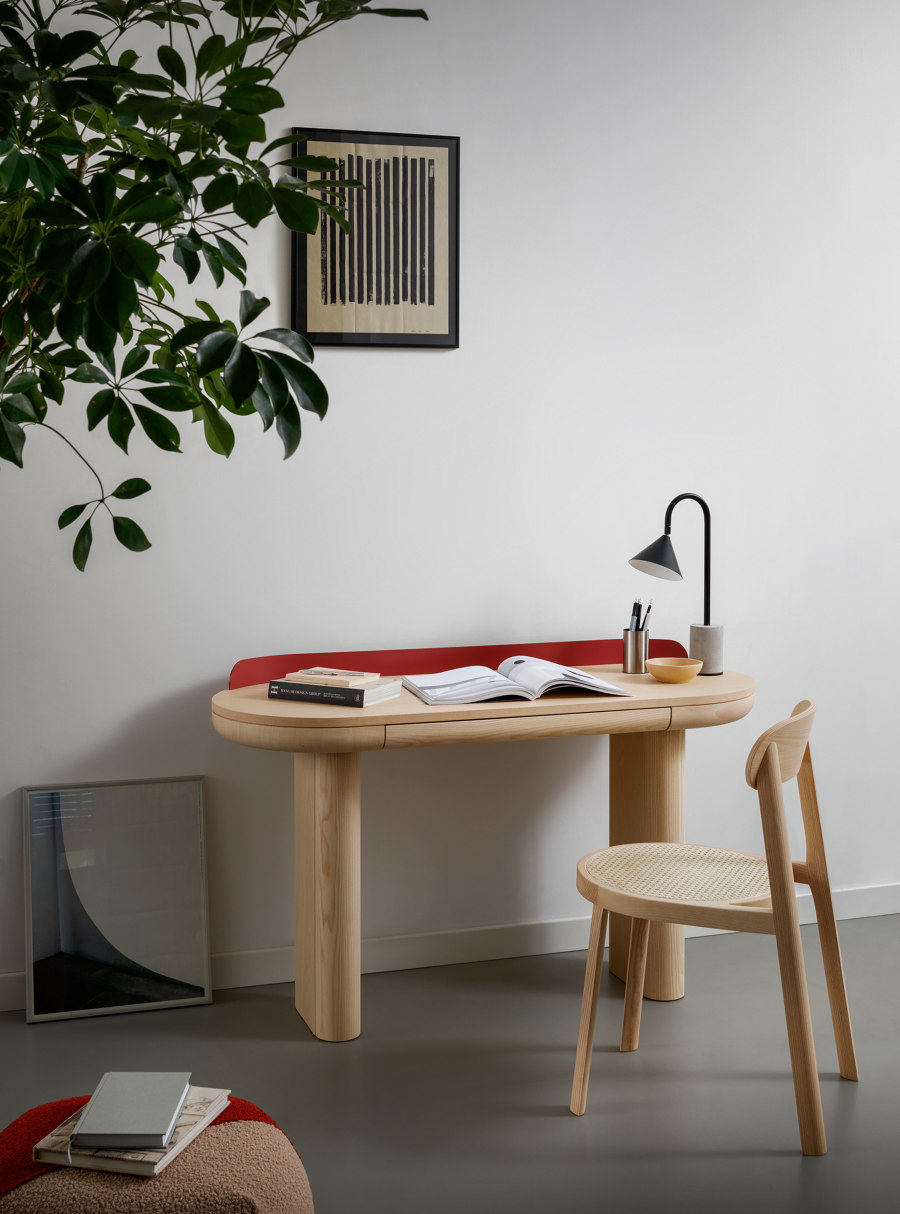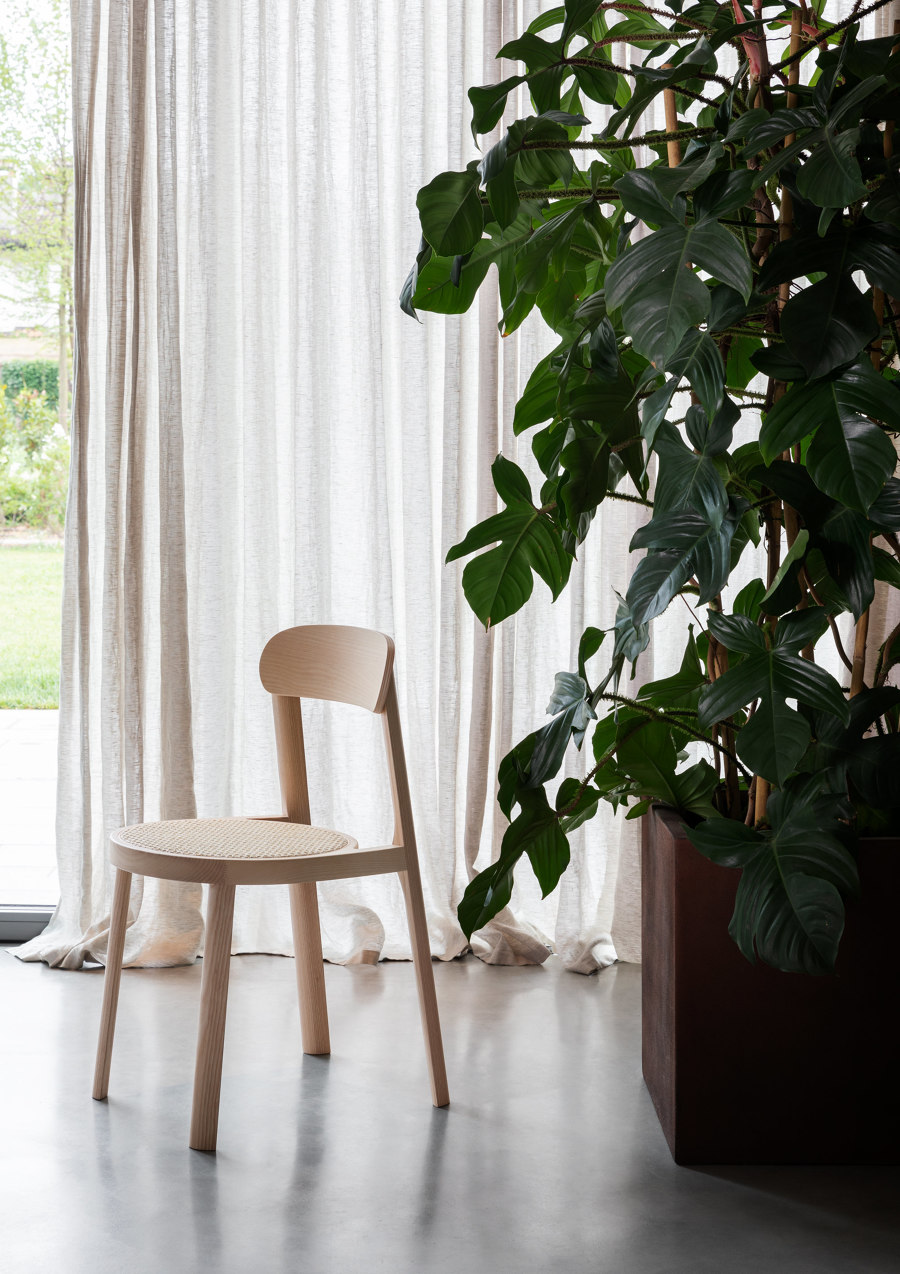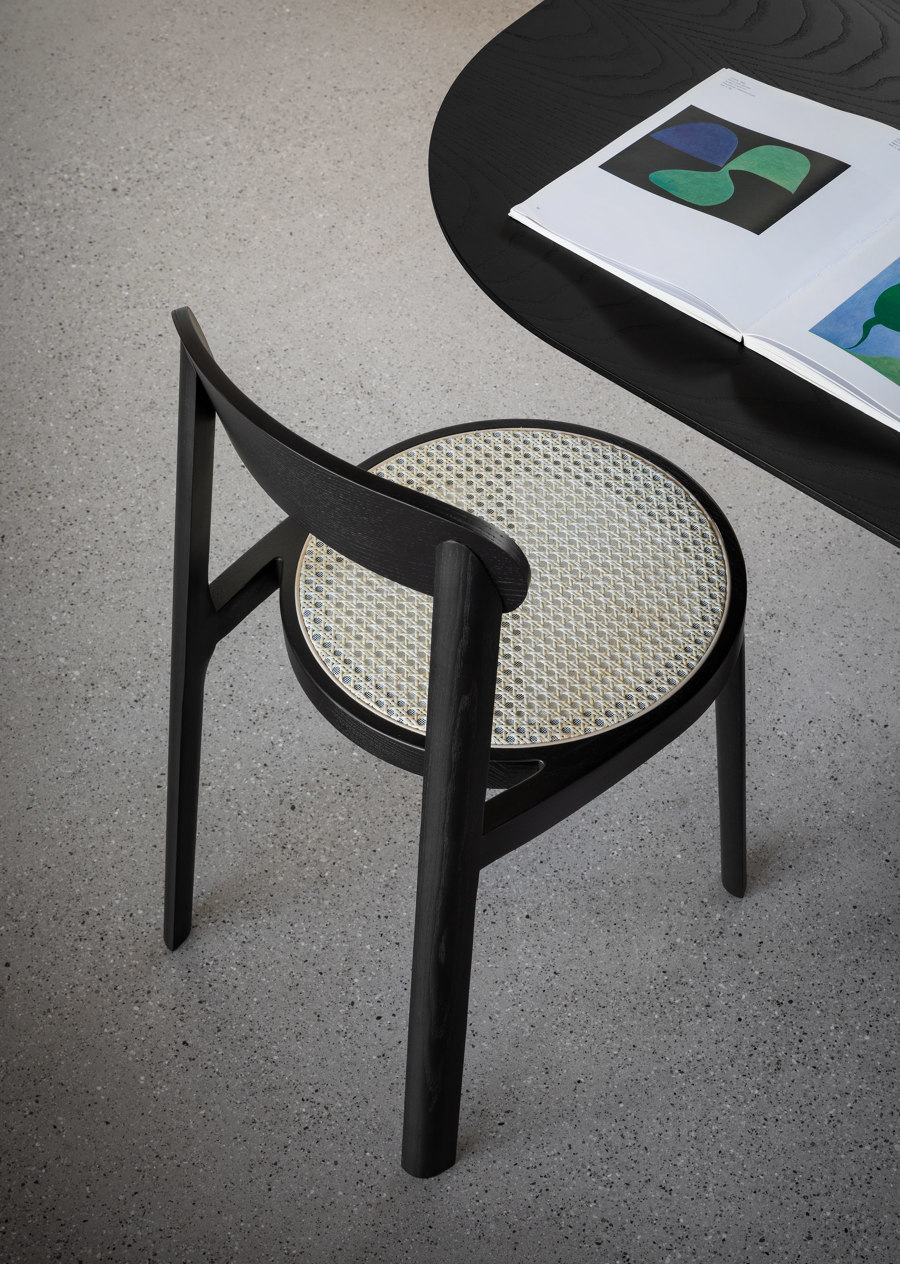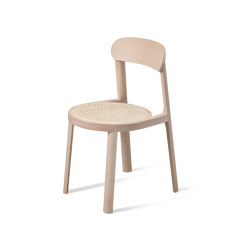Miniforms’ Brulla chair seamlessly blends the past and present
Brand story by Dominic Lutyens
Meolo, Italie
14.12.21
The pared-down Brulla by Miniforms reflects today’s craving for playful curves. It marries individuality and neutrality, rendering it suitable for all styles of interior.
The Brulla chair references the bistro chairs seen in Viennese cafés since the 19th century – but subtly and subliminally

The Brulla chair references the bistro chairs seen in Viennese cafés since the 19th century – but subtly and subliminally
×Interior designers frequently reference historical eras to help them create a desired look. If opulence is required, the go-to style is often 1930s Art Deco. Or, for a sharper look that banishes fussiness yet still looks luxe, they may well channel the space-age 1960s. Another approach is to suggest the past in a subliminal, ineffable way.
Exemplifying this is a major trend today for curves in interiors. Once considered retrograde, curves are making a comeback. Rich in historical associations, they evoke everything from the Classical symmetry of Renaissance arches to the sinuous contours of Art Nouveau. They appeal for pushing back against the convention of rectilinear rooms, creating an inviting yet modern atmosphere.
‘I felt that the legs, seat and backrest should feel like a single entity instead of individual pieces that had been joined together’ – Stefan Krivokapic
The new Brulla chair, manufactured by Italian furniture company Miniforms, captures this craving for the curvaceous. Miniforms – a family-run business founded in the 1960s and headed up today by brothers Alessandro, Matteo and Mario Bardini – commissioned Milan-based studio Skrivo to design Brulla. This practical, stylish, stackable chair – suitable for both the contract and domestic markets – seamlessly synthesises the straight lines of its legs with the curves of its seat and backrest, forming a cohesive, minimal design.
The neutrality of Brulla, designed by Skrivo, is conveyed by its resolved form – straight legs and a perfectly circular seat

The neutrality of Brulla, designed by Skrivo, is conveyed by its resolved form – straight legs and a perfectly circular seat
×Reinforcing its pared-down aesthetic is its restricted palette of materials – a frame made of ash, black ash or ash-stained walnut, providing a choice of three wood tones (blond, a warm mid-tone and dramatic ebony black) and seat fashioned from tautly stretched woven Vienna cane.
The latter provides a clue as to the chief inspiration behind Brulla – the iconic Austrian bentwood chairs, created by Viennese company Gebrüder Thonet in the 19th century. The most famous of these, the No 14 Chair, is emblematic not just of fin-de-siecle Vienna but of an axis of avant-garde European capital cities; it soon became a much-loved fixture of Parisian cafés.
Once considered retrograde, curves are making a comeback. Rich in historical associations, they evoke everything from the Classical symmetry of Renaissance arches to the sinuous contours of Art Nouveau
With its rather ornate wood frame, this might look classical today but in the 19th century, it represented cutting-edge manufacturing – and prefigured the transition from nature-inspired Art Nouveau to machine-worshipping modernism.
In a circular repetition of this tradition, the same fusion of old and new characterises Brulla – although the point of it is that this blend is registered subliminally, if at all.
Brulla is available in a restricted palette of three wood tones, including graphic, dark black ash

Brulla is available in a restricted palette of three wood tones, including graphic, dark black ash
בMy brief was to design a new chair that takes its cue from the bistro-style chairs of the past,’ explains Stefan Krivokapic, Skrivo’s Creative Director. ‘This suited me well as I always wanted to design this type of chair. There’s a quote by Italian architect Ernesto Nathan Rogers that I find very inspiring: “The work of the present is a bridge between past and future”. I tend to be very influenced by history, culture and tradition and try to merge that with the needs of today. With this project, I wanted to create a contemporary version of the archetypical bistro chair found all over the Austro-Hungarian empire in the late 19th century.’
Indeed, the chair represents a dichotomy between old and new. The perfect circle forming the seat has a graphic impact and looks contemporary yet the chair has a quirky character with its back legs leaning inwards – almost like an alert, four-legged animal. The seat tilts gently upwards from the back, which culminates in a tilted, curved backrest that comfortably cradles the sitter’s back.
In another twist, the seat nods to No 14, which also features a circular seat, as Krivokapic points out: ‘I wanted the seat to be the protagonist and to be round because, for me, that was the archetype for this type of chair.’
The chair is also available in a warm mid-tone – ash-stained walnut
Yet Brulla looks contemporary thanks to the seamless resolution of its various components. ‘I felt that the legs, seat and backrest should feel like a single entity instead of individual pieces that had been joined together,’ elaborates Krivokapic. ‘We used the latest CNC-woodworking technologies and designed the chair so that it’s strong enough to fulfil the demands of the contract market.’
Brulla is highly considered. Krivokapic says that it took longer than usual to develop due to the pandemic and uncertainty of when it could be launched. Yet for all its individuality, Brulla also has a neutral aesthetic that is an asset for interior designers. It might connote the past but it doesn’t reference a specific period of history, allowing it to fit in with all kinds of interiors, from the traditional to the contemporary – and all styles in between.
© Architonic






